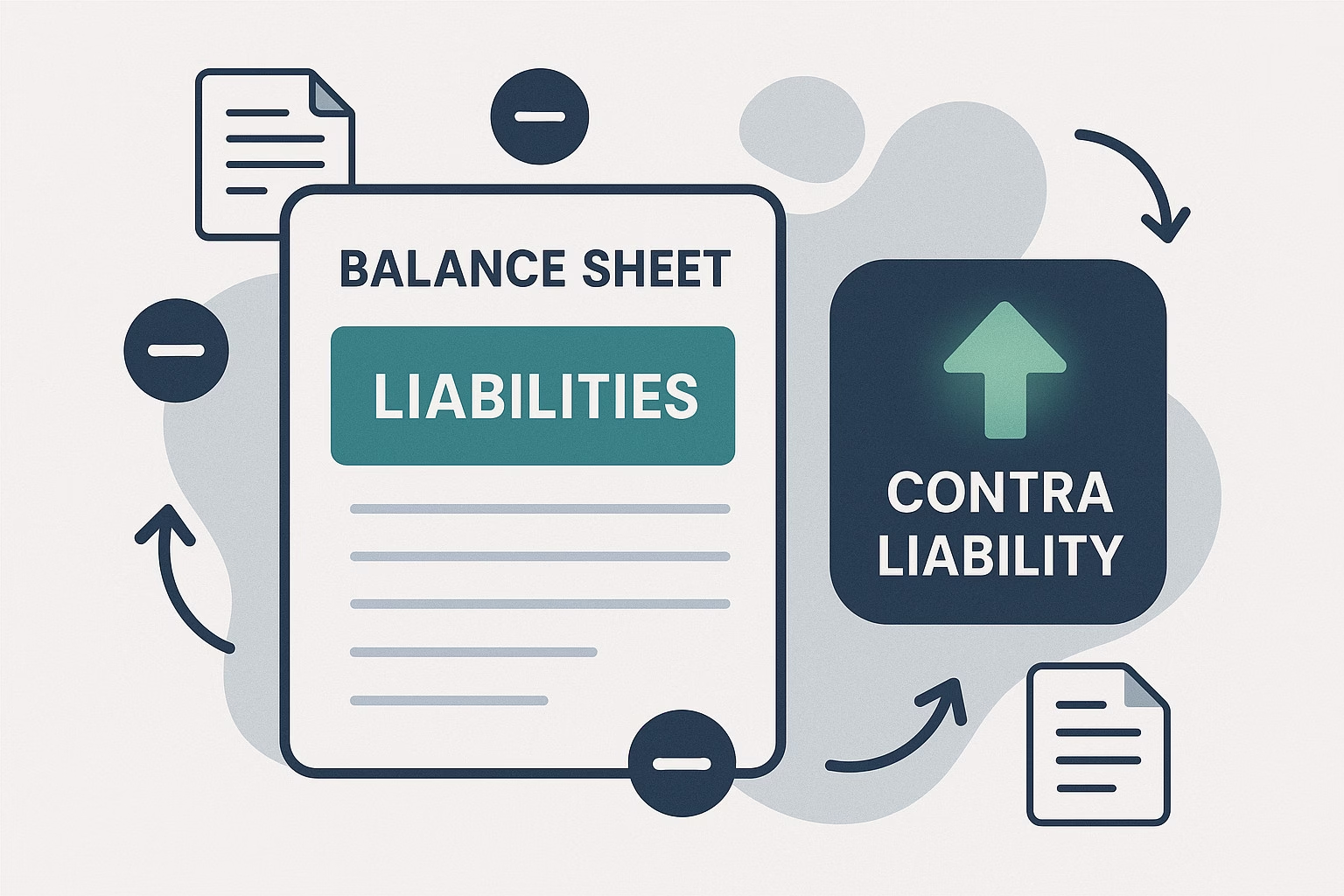In financial accounting, most liabilities represent amounts a company owes to others — such as loans, payables, or accrued expenses. However, not all liabilities simply increase what a company owes.
Enter the concept of a contra liability account — a unique type of account that reduces the total amount of liabilities shown on the balance sheet.
💡 What Is a Contra Liability Account?
A contra liability account is an account that carries a debit balance, which is the opposite of a normal liability account (which typically carries a credit balance).
Its main purpose is to offset or reduce the balance of a related liability account, providing a more transparent and accurate picture of a company’s financial position.
Think of it as a “negative liability” — it doesn’t mean the company owns something, but rather that it’s tracking adjustments or deductions related to its obligations.
🧾 Common Examples of Contra Liability Accounts
- Discount on Bonds Payable
- When a company issues bonds at a discount (below face value), that discount is recorded in a Discount on Bonds Payable account.
- This contra liability reduces the total bonds payable to reflect the true carrying amount of the debt.
- Over time, the discount is amortized as interest expense, and the liability increases until it equals the bond’s face value at maturity.
- Debt Issue Costs (Unamortized Loan Fees)
- Costs such as legal, underwriting, or registration fees incurred when issuing debt are recorded as a contra liability.
- These costs reduce the carrying amount of the related liability and are gradually amortized as an expense over the life of the loan.
- Sales Returns Allowance for Unearned Revenue
- In some industries, when revenue is received in advance (creating a liability), a portion may be held back to account for potential returns or refunds.
- That portion is tracked in a contra liability account to adjust the net unearned revenue.
📊 Example
Imagine a company issues $1,000,000 in bonds but sells them at $950,000 — a $50,000 discount.
| Account | Debit | Credit |
|---|---|---|
| Cash | 950,000 | |
| Discount on Bonds Payable | 50,000 | |
| Bonds Payable | 1,000,000 |
On the balance sheet:
Bonds Payable: $1,000,000
Less: Discount on Bonds Payable: ($50,000)
Net Carrying Amount: $950,000
This presentation shows the true economic value of the debt at the time of issuance. Over time, as interest is recognized, the discount is amortized and the liability balance moves closer to its full amount.
📚 Why It Matters
- Transparency: Contra liabilities improve clarity by showing gross and net liability values.
- Accuracy: Reflects the time value and costs associated with financing activities.
- Regulatory compliance: Ensures financial statements align with accounting standards like IFRS and US GAAP.
- Investor insight: Helps stakeholders understand the real cost of debt and financing.
🧠 Simple Analogy
Think of a contra liability as a “coupon” attached to a company’s debt — the debt is still there, but the coupon (discount or adjustment) reduces its current impact on the financial statements until it’s fully used up.
🪙 Key Takeaway
A contra liability doesn’t represent an asset — instead, it’s a tool accountants use to adjust and accurately represent the net value of liabilities. It plays a vital role in ensuring balance sheets are precise and transparent, especially for companies with complex financing structures.

